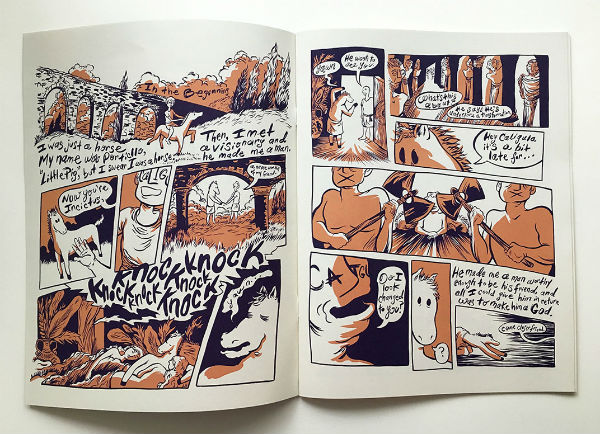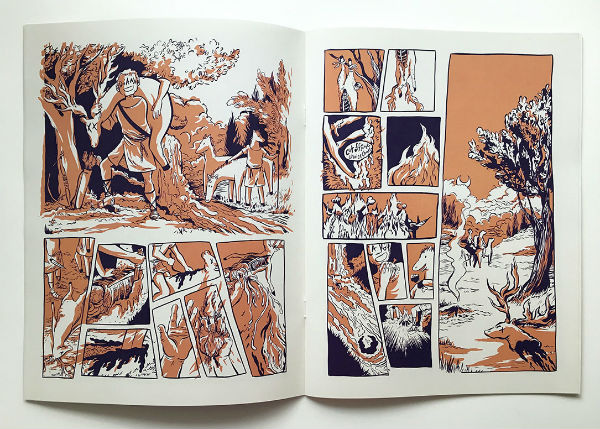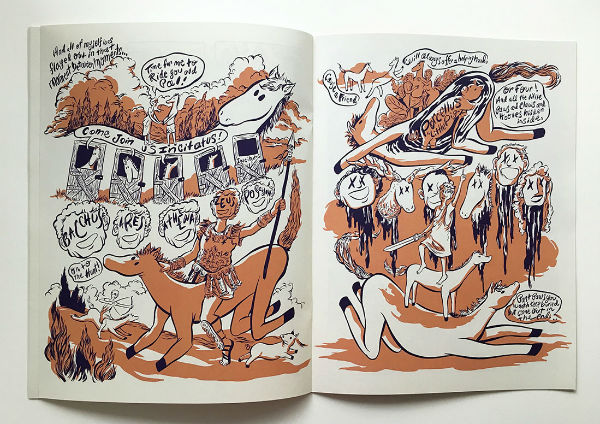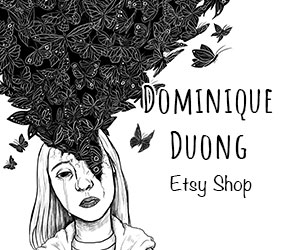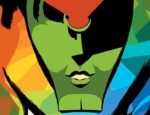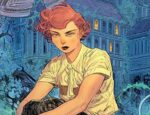One of the most interesting things about the comics medium is that how a story is told is perhaps more important than the story being told. In Ada Price’s Caligula, she extrapolates the little known legend of said Roman emperor’s horse being made a member of the senate to such a degree as to become fantasy, creating a work that while non-functional as a history lesson is deeply evocative as a piece of historical fiction. Price’s control over the language and the craft of visual storytelling is exceptional here, wringing out from a fragmentary story a host of emotions, from pathos to disgust.
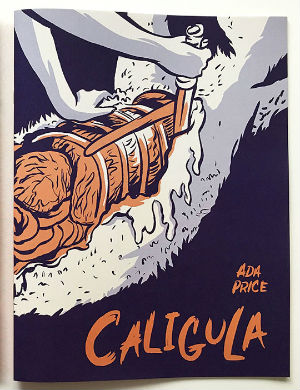 The central conceit Price employs in Caligula is to have the narration be delivered by an anthropomorphic version of the emperor’s horse Incitatus. When Caligula confers the status of manhood upon the horse Porticllo and turns him into Incitatus, it serves as a prelude to the emperor conferring the status of godhood on himself. The bulk of the story recounts Caligula’s descent into madness and bloodshed as he seeks to fulfill what he sees as the duties of the entirety of the Roman pantheon.
The central conceit Price employs in Caligula is to have the narration be delivered by an anthropomorphic version of the emperor’s horse Incitatus. When Caligula confers the status of manhood upon the horse Porticllo and turns him into Incitatus, it serves as a prelude to the emperor conferring the status of godhood on himself. The bulk of the story recounts Caligula’s descent into madness and bloodshed as he seeks to fulfill what he sees as the duties of the entirety of the Roman pantheon.
In depicting the hedonism and violence we associate with Caligula’s reign, Price doesn’t shy away from an overall sense of his depravity, though she makes many smart choices in obscuring some of the specifics of what happens. Training the camera away from carnality far more than carnage, particularly when it comes to a sequence where Caligula, taking on the role of Diana, hunts, kills, guts, cooks, and eats a deer.
This sequence is unflinching in its depiction of cutting into the beast and pulling out its innards in a way that lets the reader fill in the blanks when it comes to what the emperor has done to his human conquests. Later when the senators turn against Caligula they seek Incitatus’ aid in controlling the emperor’s indulgences. In keeping with his passive nature Incitatus is unable to go against the comrade who made him a man, and for his indecision is poisoned by the senators who sought his aid. Despite his loyalty the emperor betrays Incitatus, killing him in the throes of his bloodlust as he slaughters all the other horses at the chariot race.
In a twist of fate and contrary to historical events, Caligula is then assassinated by proxy when he consumes the poisonous body of his former friend. The story concludes with the foolish horse that would be a man envisioning himself and the emperor who would be a god ascending into the sky. Incitatus ruminates on the nature of fate and having learned nothing from his time as a man concludes that having a friend like Caligula by his side is better than nothing as “what’s a little murder and intrigue between good pals, right?”
Price makes a bold choice to have the narrative of Caligula not only stray from historical record but to focus less on plot and more on evoking the reader’s thoughts and feeling through the eyes of the naïve Incitatus. The comics’ greatest strength then lies in the choices Price makes in depicting Incitatus’ time with the emperor. There is a low humming unease expressed through the aesthetic choices that nicely mirrors Incitatus’s inability to fully grasp what is going on around him. From the start the reader will notice the luscious screen-printed color work on the parchment-like off-white pages. What would be areas of black are instead a deep navy blue with spreads alternating their highlight color between a putrid nauseous green and a blood-tinged orange.
The page layouts are equally off-kilter with rows of panels confirming to a curve or minutely uneven gutters separating fractured tiny panels. Shots within panels are frequently cropped at uncomfortable canted angles, symbolic of the emperor’s growing mania. Price brilliantly intercuts between the violence of Caligula hunting as Diana, with him presiding over an orgy as Bacchus. The death of the deer juxtaposed with the death of an orgy participant reminding us that the emperor likely sees no difference between the two.
Beyond the formalist decisions Price is making, Caligula is a showcase for her abilities as a cartoonist. Her hand lettering is a beautiful mix of cursive and print that make each letter feel unique. There is an excellent sense of setting as her renderings of classical statues and vases as well as ornate aqueducts and coliseums suggest a that a good portion of historical research was done in the creation of this comic. This eye for detail extends into the character design as well, with Price putting an idiosyncratic emphasis on the grotesqueries of wrinkles in skin and the folds in cloth.
Her rendering talent also extends into the anatomical close-up of hands and entrails in the deer-skinning scene. All of this is nicely contrasted by the overly cartoony Incitatus whose floppy limbs, featureless body, and blank stare make him an outsider in both the world of men and of animals. A similar cartoon aesthetic is applied with darker intent to the face of Caligula whose crooked smile and eyes replaced with words drips with madness and menace. The way the emperor’s perverse smile is later plastered Joker-like onto the bloody severed heads of his victims in Incitatus’ death dream is downright chilling.
The story of Caligula is well known, but Price breathes new life into it in her re-telling. The flourish in the art and design combined with the distinct point of view at play create a work that, while consciously not detailing what happened, very much captures the feel of events. The dread of being pulled headlong towards something horrible that you are powerless to stop. While Price’s body of work in comics is small, and mostly centered around her aptitude for screen-printing, Caligula shows just how capable she is at expressing her vision through the combination of both mediums.
Ada Price (W/A) • Self Published (available to read online here)
Review by Robin Enrico





